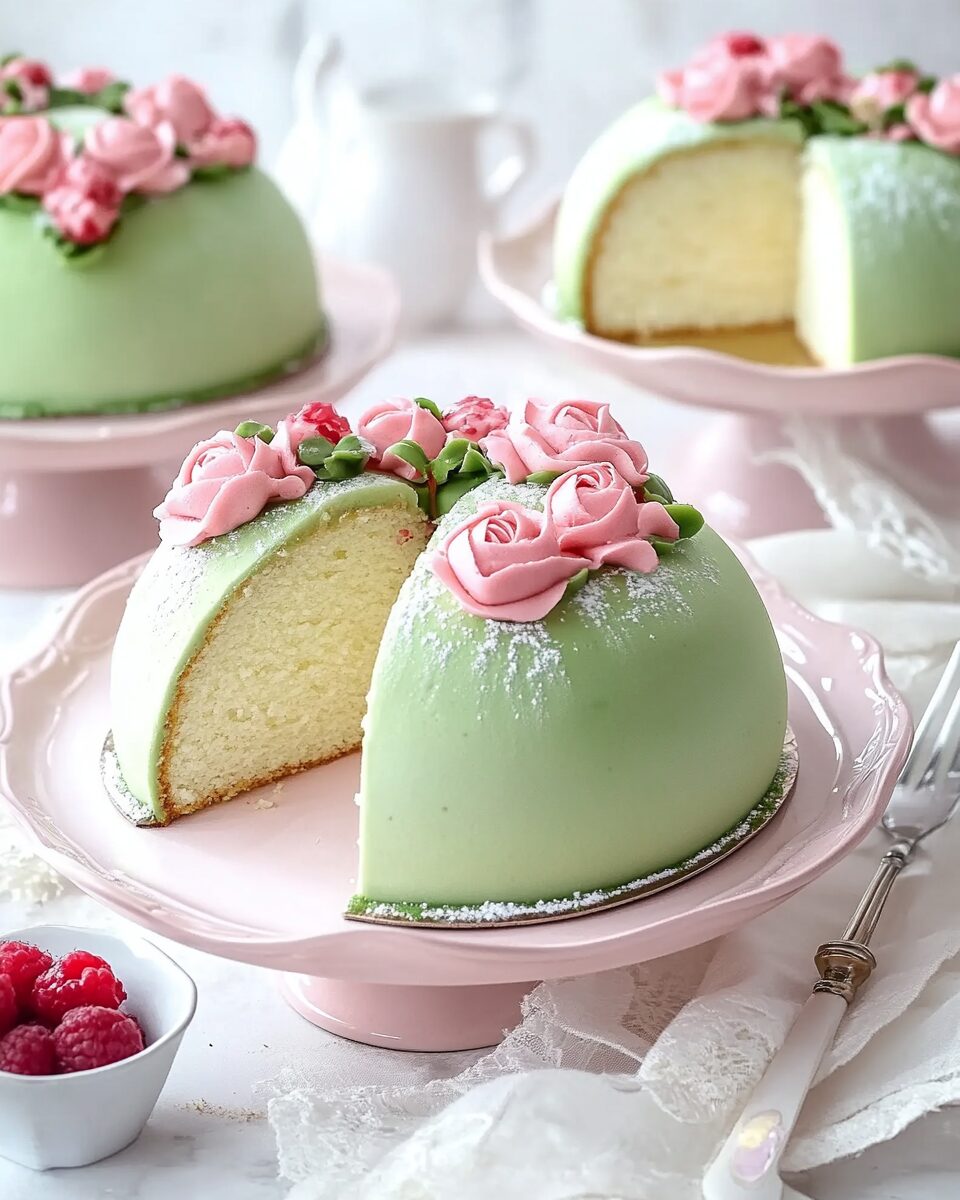The Royal Origins and Cultural Significance
Swedish Princess Cake has a history as regal as its name suggests. The original recipe is believed to have been developed in the early 20th century by Jenny Åkerström, a Swedish home economics teacher who taught the daughters of Prince Carl of Sweden. The dessert was initially called “Grön Tårta” (Green Cake) due to its iconic marzipan covering. However, it became popularly known as “Princess Cake” after the princesses expressed their fondness for it, and it has retained the royal association ever since.
In Sweden, Prinsesstårta is more than just a dessert—it’s a cultural staple. It’s traditionally eaten during the third week of September, celebrated nationally as “Princess Cake Week,” and is also common at birthday parties, name days, and graduation celebrations. Its presence on the table often signals a special occasion, and its light texture and charming appearance make it an uplifting centerpiece.
The Signature Dome and Distinctive Marzipan Cover
One of the most iconic features of Princess Cake is its dome shape, achieved by piling whipped cream generously atop the layered cake and smoothing it into a mound before covering it with marzipan. This gives the cake its unmistakable silhouette and adds to the sense of luxury and craft.
The green-tinted marzipan isn’t just decorative—it’s a key part of the flavor and texture. Marzipan, made from ground almonds and sugar, provides a sweet, nutty contrast to the creaminess of the custard and the fluffiness of the sponge. The pastel green color, traditionally used to represent freshness and springtime, is also visually striking and gives the cake its fairytale-like appearance. The final flourish—a pink marzipan rose—sits like a crown on top, completing the regal look.
A Harmony of Flavors and Textures
Princess Cake is a masterclass in balance. The sponge layers are airy and light, providing just enough structure to hold the fillings while melting easily in the mouth. The vanilla custard adds a creamy richness, infused with the comfortingly sweet scent of real vanilla. Raspberry jam provides a bright, tart counterpoint that cuts through the richness and adds a pop of fruit flavor.
What truly elevates the cake is the stabilized whipped cream. Fluffy and smooth, it creates the dome structure and offers a cool, milky lightness that unites the other components. The gelatin used in the cream ensures it holds its shape, especially important when constructing the cake’s signature mound and when slicing it later.
Together, these elements create a cake that is indulgent but not heavy, sweet but never cloying. It’s the kind of dessert that leaves you reaching for a second slice—subtle, refined, and completely satisfying.
A Baker’s Dream: Detailed Yet Rewarding
While Princess Cake may appear complex, each component can be prepared in advance, making the process approachable for home bakers. The sponge cake, custard, and whipped cream are straightforward, and the marzipan handling becomes easier with a bit of practice. Assembling the cake is where the magic happens—layering the fillings, sculpting the dome, and draping the marzipan smoothly over the top.
This dessert is an excellent project for special occasions, and making it from scratch adds a layer of appreciation to each bite. For those who enjoy the process of baking and decorating, creating a Princess Cake is both a challenge and a reward. The end result is a professional-looking cake that rivals anything you’d find in a patisserie.
Perfect for Seasonal Celebrations and Elegant Gatherings
Princess Cake is particularly fitting for spring and summer celebrations. Its pastel tones, floral decorations, and light texture make it a perfect choice for Easter, Mother’s Day, bridal showers, or garden parties. The flavor profile also suits warmer weather, with its bright raspberry and cool custard notes providing refreshment without heaviness.
This cake also adapts beautifully to a variety of themes. While the traditional version is green, marzipan can be tinted in other pastel shades to match your event’s color palette—soft pinks, light yellows, or pale lilacs. The rose on top can also be crafted from homemade marzipan, gum paste, or even a fresh edible flower for a personalized touch.
Tips for Serving and Storing
Princess Cake is best served chilled. After assembling, it should be refrigerated for at least an hour to allow the layers to set and the flavors to meld. It slices best when slightly cold but should be allowed to sit at room temperature for a few minutes before serving to let the flavors bloom.
Because of the whipped cream and custard, this cake should be stored in the refrigerator and enjoyed within 2–3 days. To prevent the marzipan from drying out, store the cake in a domed cake container or wrap it loosely in plastic wrap. Leftovers (if there are any!) make a delightful treat with a cup of coffee or tea the next day.
A Joy to Make, a Delight to Share
More than just a dessert, Swedish Princess Cake is a joyful experience—from the process of making it to the moment it’s sliced and shared. Its nostalgic charm, cultural heritage, and exquisite flavor make it a dessert worth celebrating. Whether you’re baking it to honor a loved one, exploring Scandinavian cuisine, or simply indulging your passion for pastry, this cake offers a memorable and meaningful way to mark any occasion.
Conclusion
Swedish Princess Cake is a timeless treasure in the world of baking. Its delicate balance of flavors—airy sponge, creamy custard, tart raspberry, and smooth marzipan—come together to create a dessert that is both beautiful and delicious. The dome shape, pastel coloring, and elegant rose garnish make it an unforgettable centerpiece that turns any gathering into a celebration.
Though it may require a bit more time and care than a standard layer cake, the payoff is undeniable. It’s a dessert that brings smiles, sparks conversation, and offers a little slice of royalty on your plate. Whether you’re new to Scandinavian baking or a seasoned enthusiast, this classic cake deserves a spot in your repertoire. Make it once, and it’s bound to become a cherished tradition.






